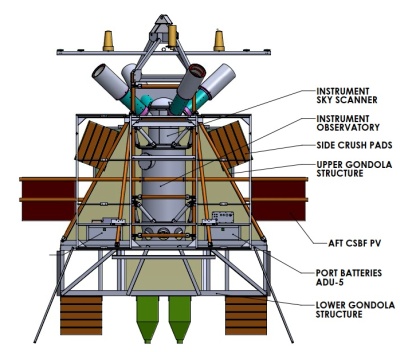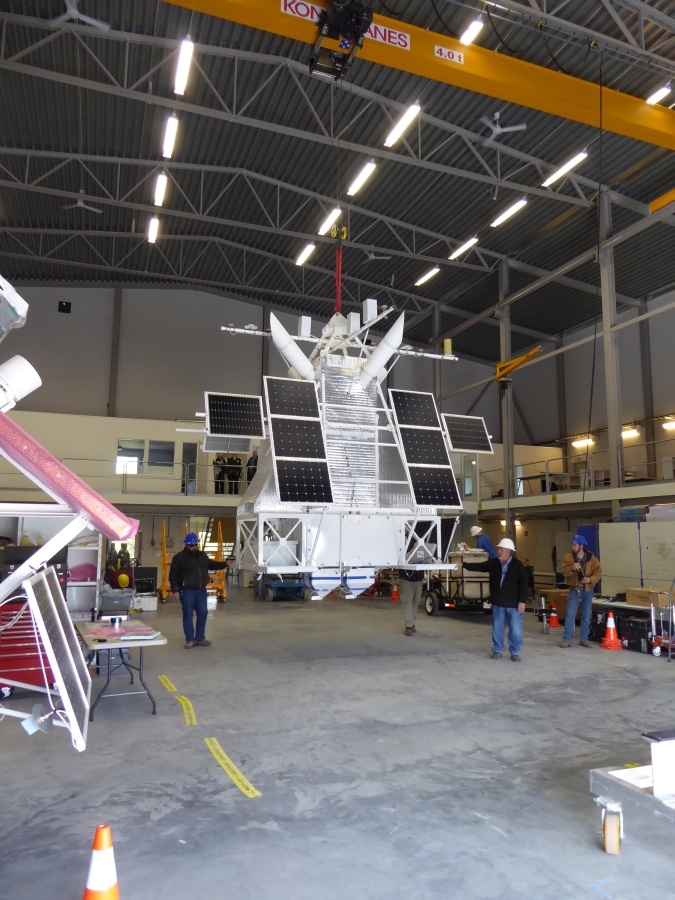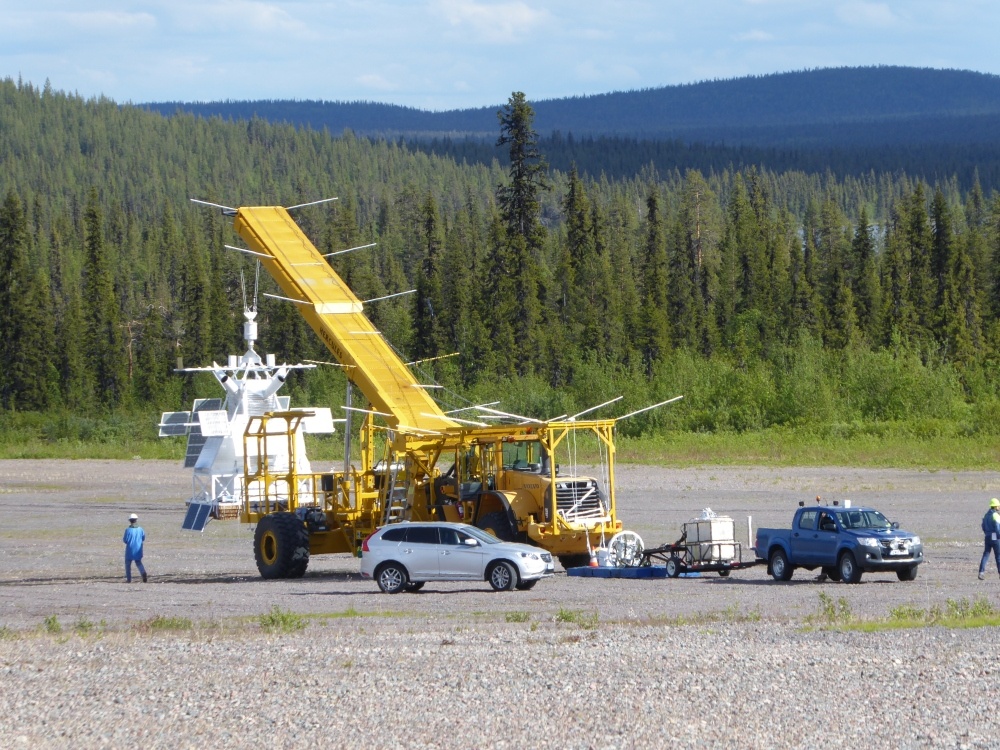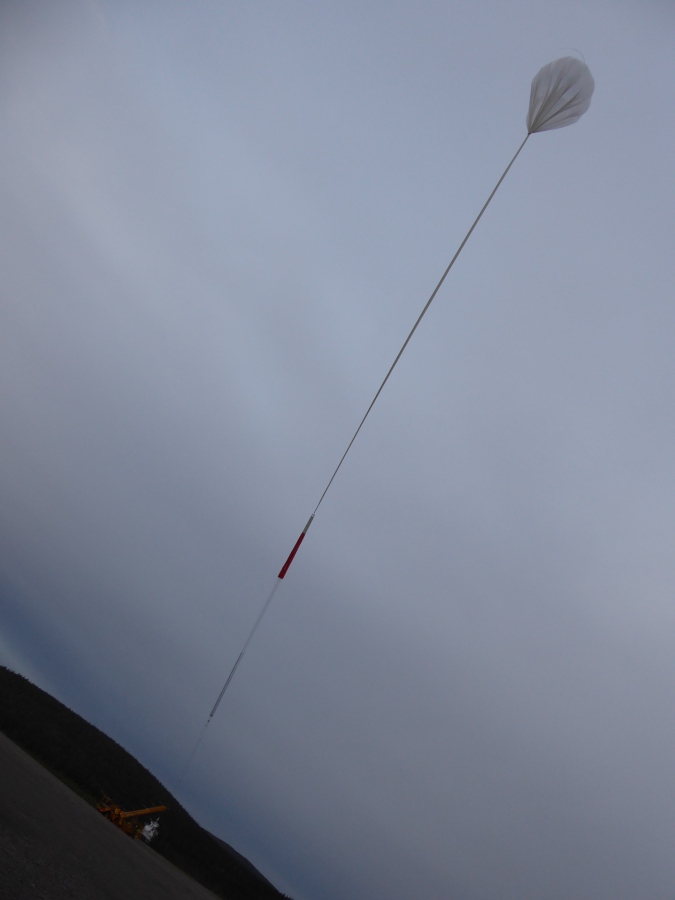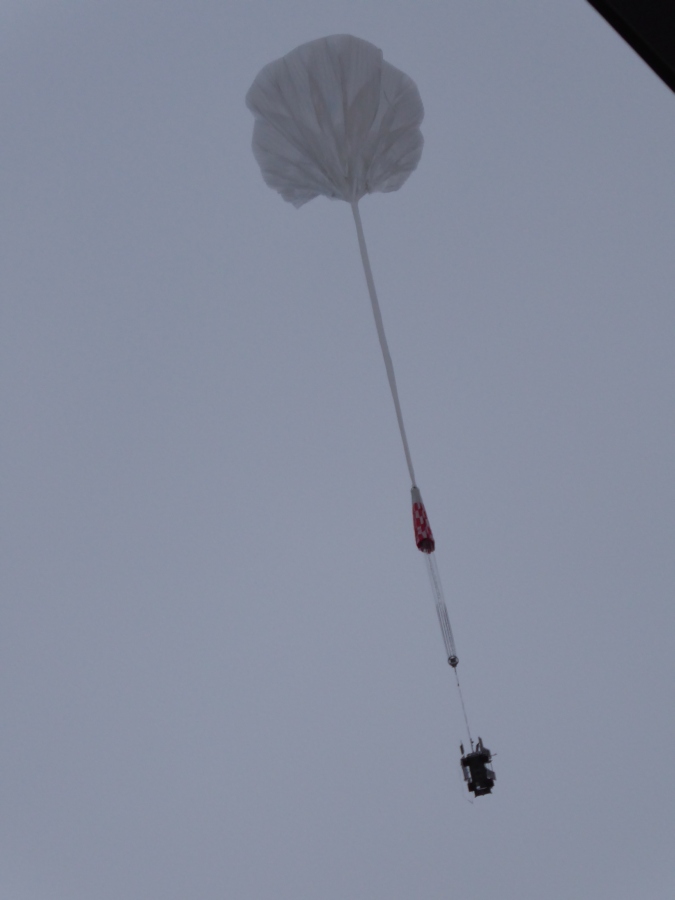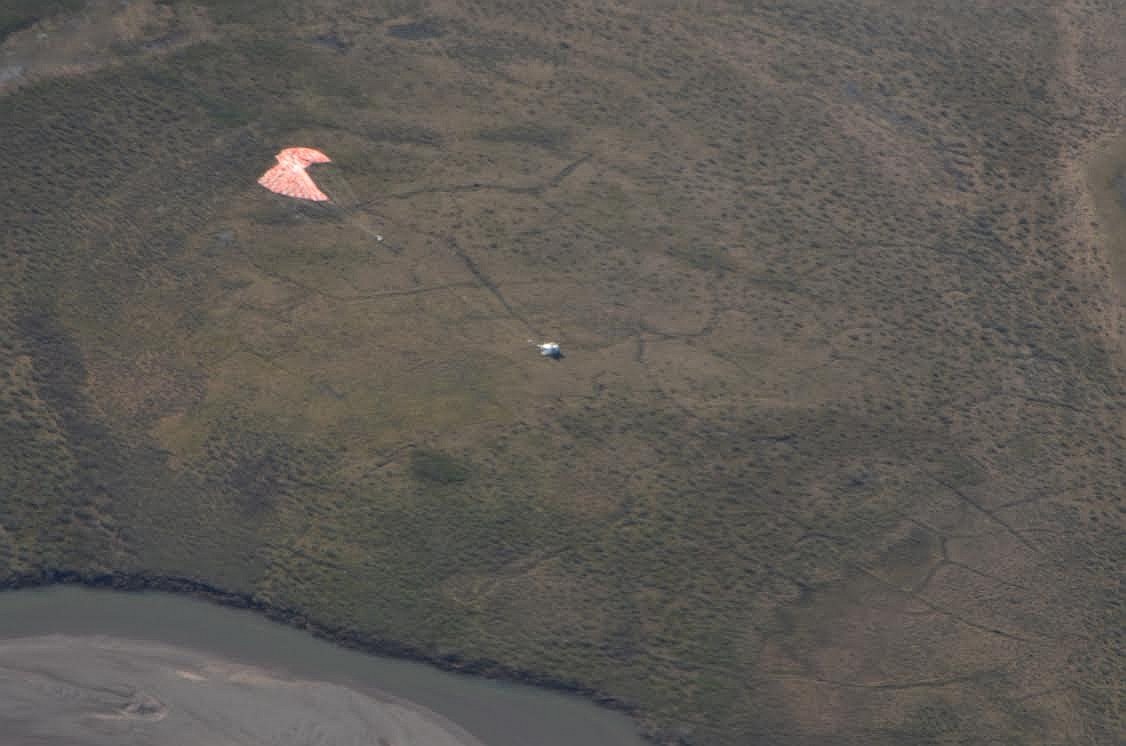Purpose of the flight and payload description
HIWIND stands for High-altitude Interferometer WIND Experiment and is the first balloon-borne Fabry-Perot interferometer specialled conceived for measure the daytime thermospheric winds by monitoring the neutral wind induced Doppler shift in the airglow emission O 630 nm.
At left can be seen an scheme of the instrument (click to view in detail).
The instrument measures four meters and weighs about 720 kilograms. Inside the central body -in an environmentally sealed pressure vessel- are located the different elements of the interferometer which form the optical bench: the lenses, an etalon chamber, the filter wheel and a CCD. The cylindrical body is covered by reflective space blankets during flight to provide protection from the extreme thermal environment that exists in the stratosphere. Near the top of the instrument, four light port tubes pointed upwards allow light measurements to be taken in four directions simultaneously to determine wind velocity and direction. The tubes are oriented at an elevation angle of 50º from the horizon to look at wind velocities well above HiWind's flight altitude.
The solar panels are continuously positioned to face the Sun during flight to provide power and shade critical areas of the instrument from intense solar radiation. A large radiator at the rear allowed precise thermal control of sensitive components inside the payload.
Pointing information is provided via differential GPS and a sun detector developed by NASA to drive a motorized rotator located between the payload and the balloon.
Details of the balloon flight
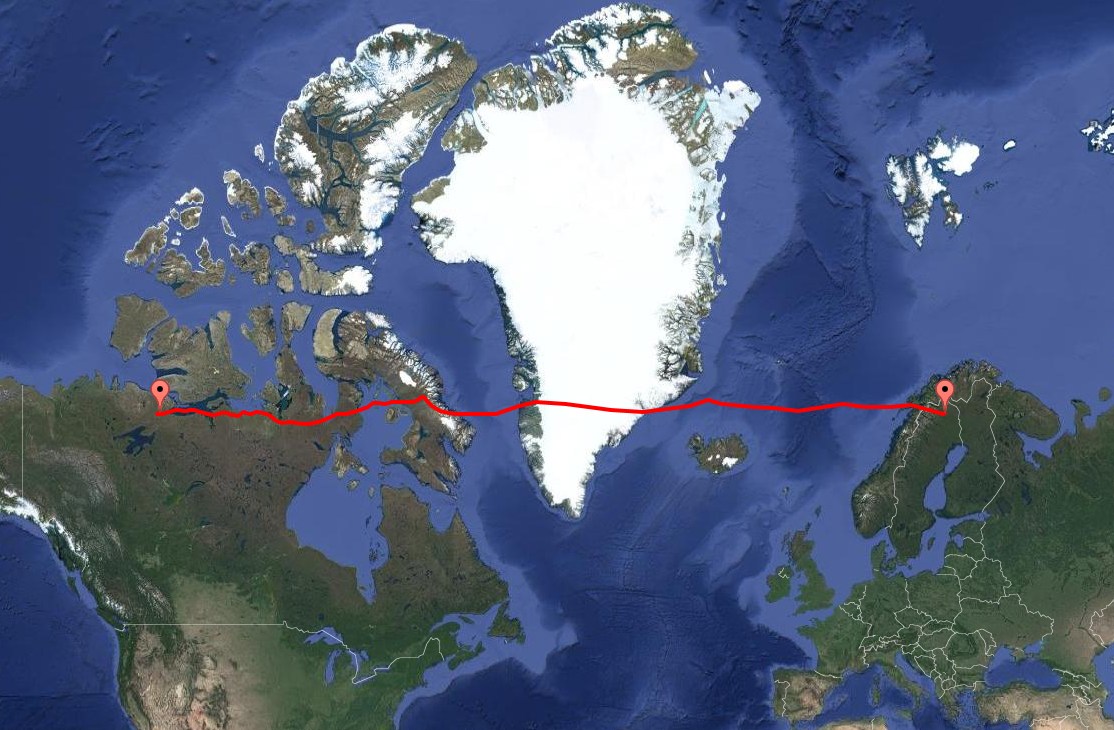
Balloon launched on: 6/24/2018 at 22:29 utc
Launch site: European Space Range, Kiruna, Sweden
Balloon launched by: Columbia Scientific Balloon Facility (CSBF)
Balloon manufacturer/size/composition: Zero Pressure Balloon Raven Aerostar - 39.570.000 cuft (0.8 mil)
Flight identification number: 683N
End of flight (L for landing time, W for last contact, otherwise termination time): 6/30/2018 at 13:53 utc
Balloon flight duration (F: time at float only, otherwise total flight time in d:days / h:hours or m:minutes - ): 5 d 16 h 13 m
Landing site: Near Kugluktuk, Nunavut territory, Canada
The balloon was launched by dynamic method, after repeated postponements due to unfavorable weather conditions, on Sunday, 24 June 2018 at 22:30 utc. After reaching float altitude of 127.000 ft, the balloon and it's payload moved westward in a more or less straight line across the Atlantic Ocean. Two days into the flight, it completed the crossing and started to fly over Greenland.
Finally, on June 30, after reaching a suitable zone in the Northwest part of Canada for landing the mission was terminated. The separation command was sent from the Operative Control in Palestine, Texas at 13:53 utc. and the landing occured aproximatelly 45 minutes later near Kugluktuk, in Nunavut territory.
Total flight time for the mission was 5 days, 16 hours and 13 minutes.
This was the second scientific flight of the instrument
External references
- Hiwind has launched and landed UCAR HAO News
- HIWIND Observation of Summer Season Polar Cap Thermospheric Winds (Article) Journal of Geophysical Research: Space Physics, 124, 9270
- HIWIND Observation of Summer Season Polar Cap Thermospheric Winds (Dataset) Dataset of the mission at the National Center for Atmospheric Research server
- Interplanetary Control of High-Latitude Thermospheric Winds: Results From HIWIND and Model Simulations Journal of Geophysical Research: Space Physics, 127, e2022JA030394
- It's a Bird, it's a Plane, no, it's HiWIND HAO News & Events
- NASA summer campaign 2018 SSC website
- What Do the New 2018 HIWIND Thermospheric Wind Observations Tell Us About High-Latitude Ion-Neutral Coupling During Daytime? Journal of Geophysical Research: Space Physics, 124, 6173
14483If you consider this website interesting or useful, you can help me to keep it up and running with a small donation to cover the operational costs. Just the equivalent of the price of a cup of coffee helps a lot.

